‘Rational Exuberance’ in a Dozen Rosés of Champagne and Sparkling Wine
‘Irrational exuberance’ is an economic term referring to speculative bubbles in the stock market. In fact ‘rational exuberance’ can —with equal gusto— also describe the carbon dioxide that puts the sparkle in Champagne bottles. The most painstaking of all winemaking innovations, méthode champenoise made the monks of Saint-Pierre d’Hautvillers see stars, and the wine cosmos has been creating stars ever since—white and rosé.
Regarding this last category, not only are sales of pink Champagne at record levels, it is the only style of Champagne that appears to be recession-proof. To Champagne producers hardest hit by the economic down turn, this style of wine is even more cause for rational exuberance: In today’s market, even basic, non-vintage rosé Champagne tends to sell for more than its white counterparts.
Making Champagne Blush
Getting Champagne to blush relies on one of two unrelated techniques: By far the most common is for chefs de cave simply to mix still white wine with still red wine (Rosé d’Assemblage) before the secondary fermentation. The second method, Saignée (which means ‘to bleed’) rosé, involves bleeding off a portion of red wine juice after it’s been in contact with the skins and seeds. Saignée, often a byproduct of winemaking intended to increase the concentration of red wines; when used in Champagne, it produces wines that tend to be richer in flavor with more pronounced red fruit aromatics, primarily because the allowable red wine grapes in Champagne—Pinot Noir and Pinot Meunier—produce white juice, and that requires more skin contact to pick up color and leads to greater extraction of flavors.
The style of blush Champagne that you ultimately prefer is part of the ‘rational exuberance’ of wine discovery.
Just A Spoonful of Sugar or Not
One of the most easily dispelled misconceptions about rosé Champagne is that, by its nature, it’s a sweet wine. Lo and behold, ‘dosage’ is another Champagne technique that divides the camps. Those in favor believe that the addition of sweetened wine or liquor (in which sugar content is generally measured in grams per liter) as the last step before final corking, is but one of many tools at the disposal of Champagne makers to manipulate the wine’s sensory development. Those opposed to dosage, or ‘liqueur d’expédition’, maintain that no-dosage wines are the purest examples of terroir a sparkling house can offer. Even those chefs de cave who dose choose from a wide variety of options based on the stylistic intentions; up to 50g/l for the ‘doux’ designation to six grams or less for ‘Extra Brut’. Champagne without dosage is often labeled ‘Brut Nature’, which may still contain two or three grams of sugar as part of the natural makeup of the wine.
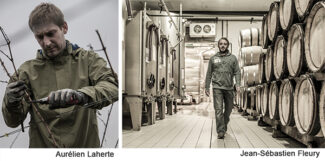
Champagne Laherte Frères
The trend in Champagne is undeniably a move toward the natural, in dosage, in fermentation and in agriculture. At the forefront of this return to the future is Aurélien Laherte. Cresting a wave of dynamic young vignerons, Aurélien founded the ‘Terres et Vins’—a collective of like-minded winemakers in Champagne who have recognized that Champagne is, first and foremost, a wine, and that by using a natural approach to viticulture and winemaking, a new school of ‘vinous Champagne’ could change not only the way the beverage tastes, but the way it is perceived.
Aurélien Laherte comes from a proud heritage of innovation in Chavot, a village on the southern side of the valley formed by the stream Le Cubry. Founded in 1889 by Jean-Baptiste Laherte, Michel and Cécile Laherte (Aurélien’s grandparents) expanded the estate to its current 28 acres. While recognizing that patience is a winemaker’s greatest virtue, Michel and Cécile understood instinctively that the use of herbicides and pesticides prevents full terroir expression in wines, and long before it became trendy, they began working the soils gently, without additives. They passed this philosophy on to their sons Christian and Thierry, and since 2005, when Aurélien (Thierry’s son) took over, he has ensured that these convictions are applied in every phase of the winemaking operation, field to cellar. Today, his portfolio contains a series of tiny production, single-vineyard, single vintage cuvées of around 3,000 bottles each, highlighting some of estates most unique and expressive biodynamically-farmed parcels. These wines are all vinified in Burgundy barrels, without malolactic fermentation, and are bottled without fining and filtration. They are then finished with little or no dosage with the intention of fully exploiting the individuality of the underlying terroirs.
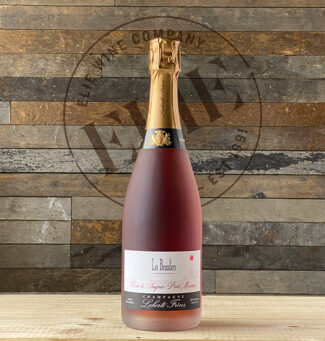 Champagne Laherte Frères ‘Les Beaudiers’, Extra-Brut Rosé ($83)
Champagne Laherte Frères ‘Les Beaudiers’, Extra-Brut Rosé ($83)
The ‘Les Beaudiers’ lieu-dit was planted in 1953, 1958 and 1965, primarily to the low-yielding Pinot Meunier, although there are a few Chardonnay, Pinot Noir and Fromenteau (Pinot Gris) vines in the parcel as well. Soils are predominantly shallow silty clay with silex, limestone and flint above a chalky subsoil. Destemming and maceration of this blend takes place for between 12 and 16 hours, with primary fermentation in used oak, then aged a minimum of 4 years. Dosage is 2 g/l. As a saignée, the color is full-on rose-petal red and offers a rich and expressive nose with a wide range of red fruits: currants, raspberries, and early spring strawberries. (Disgorged April 2021)
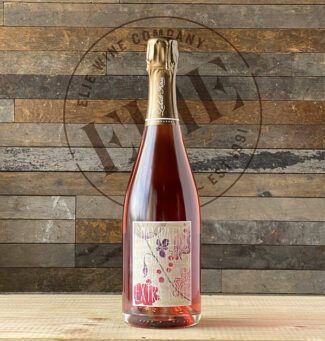 Champagne Laherte Frères ‘Rosé de Meunier’ Extra-Brut Rosé ($58)
Champagne Laherte Frères ‘Rosé de Meunier’ Extra-Brut Rosé ($58)
An innovative cuvée that makes the most of Champagne’s also-ran variety, Meunier. The Laherte plot is made up of Meunier vines between 25 and 40 years old; it is hand-picked at optimal ripeness. 60% is then macerated on the skins, 30% immediately pressed, and 10% of the final blend is still red Meunier. The wine sees a minimum of two years on lees and is dosed at 2.5 g/l; it is persistent, refreshing and precise, racy, and almost peppery, with notes of cranberry, citrus wild cherry, salty plum and dried tarragon. (Disgorged December 2020)
Champagne Fleury
Jean-Sébastien Fleury understands that at its most basic definition, ‘terroir’ means soil: “The key is soil health,” he maintains. ‘We must keep the earth healthy.” As such, at Champagne Fleury, biodynamics is key to the ideology. Many of these practices were pioneered by Jean-Pierre Fleury (Jean-Sébastien’s father), whose interest in sustainable farming began in the 1970s when he tried using manual tilling (as opposed to using herbicides) and composting (as opposed to applying synthetic fertilizers). He began a trial with biodynamics on a few acres, and by 1992, he was using it across the whole of his vineyard holdings. This includes ten plots, a total of forty acres, planted primarily to Pinot Noir. The oldest vines were planted in 1970, and new cuttings are established every year to maintain the vitality that younger vines bring to Champagne.
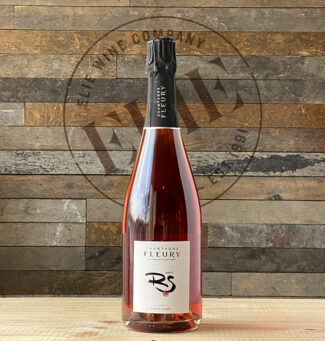 Champagne Fleury ‘Rosé de Saignée’, Côte des Bar Brut ($68)
Champagne Fleury ‘Rosé de Saignée’, Côte des Bar Brut ($68)
Located in the southern part of Champagne, the Côte des Bar contains about 20,000 acres planted primarily to Pinot Noir, with about 12% Chardonnay and another four percent of Meunier. ‘Rosé de Saignée’ is 100% Pinot Noir from the Courteron commune—town geographically closer to Chablis than Reims. The nose reveals the pedigree, with Pinot Noir’s characteristic cherry and ripe strawberry tones enveloped in juicy acidity and a mineral-rich finish. (Disgorged January 2021)
Champagne André Clouet
The Clouet family traces its Bouzy roots to 1492 and at one time was the official printmakers for the court of King Louis XV; the classically pretty labels that grace their Champagne bottles today pay homage to their aesthetic history. Clouet grapes are sourced exclusively from 20 acres of coveted mid-slope vineyards in the Grand Cru villages of Bouzy and Ambonnay.
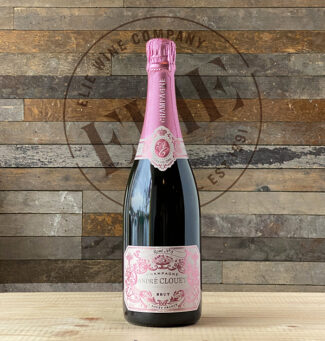 Champagne André Clouet ‘Rosé No. 3’, Grands Crus Bouzy & Ambonnay, Brut ($59)
Champagne André Clouet ‘Rosé No. 3’, Grands Crus Bouzy & Ambonnay, Brut ($59)
A beautiful, salmon-colored, 100% Pinot Noir rosé that picks up its hue and profile from the addition of 8% still Pinot Noir—the ‘3’ represents the style of the wine measured on a scale from 1-10 with 1 being the lightest and 10 being the richest. On this scale a perfect 3 winds up being creamy and full-bodied with raspberry, pomegranate, cherry blossoms on the palate and crushed chalk and orange zest on the finish.
Champagne Pierre Paillard
Paillard is a familiar name to fans of Champagne; Maison Bruno Paillard, the Reims-based producer, was founded in 1981 by Bruno Paillard and financed by the sale of Bruno’s Mark II Jaguar. The Bouzy branch of the family (they are cousins) have been at it a bit longer; Antoine Paillard first bought Bouzy vineyards in 1768. Antoine and Quentin Paillard represent the eighth generation in the family and the fourth generation to produce and bottle Champagne under the family name. The Paillard family vinifies exclusively from its own selection of Pinot Noir and Chardonnay, without a single clone on the estate.
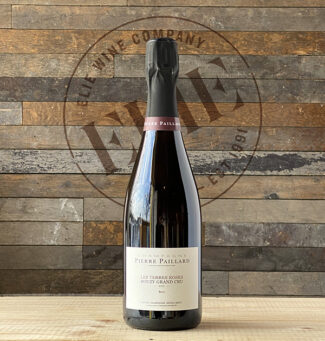 Champagne Pierre Paillard ‘Les Terres Roses XVII’, Grand Cru – Bouzy Extra Brut Rosé ($73)
Champagne Pierre Paillard ‘Les Terres Roses XVII’, Grand Cru – Bouzy Extra Brut Rosé ($73)
A cuvée built upon 65% Chardonnay, 28% Pinot Noir and 7% Bouzy Rouge Pinot Noir. It’s dosed at 2 grams per liter and is quite dry, made 100% from estate-grown fruit from the Grand Cru of Bouzy. Pale grapefruit pink in color, the wine is terroir-focused with less fruit on the nose and more warm brioche, spice, and roasted nut skin. The palate shows lemon and orange peel with leesy undertones. (Disgorged April 2020)
Champagne Gonet-Médeville
By the standards of the region, Gonet-Médeville is ‘new’ Champagne micro-house; it was formed in 2000 by Julie and Xavier Gonet-Médeville as Xavier’s family plots were being divided up. He opted for 30 acres of high quality Premier & Grand Cru vineyards located primarily in the three villages of Bisseuil, Ambonnay, & Mesnil-sur-Oger. The Gonet-Médevilles—sometimes referred to as ‘the first couple of French wines’, also have holdings in five other villages across Champagne.
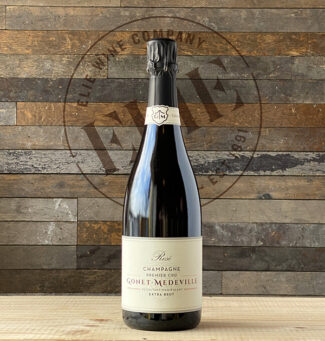 Champagne Gonet-Médeville, Premier Cru Extra Brut Rosé ($86)
Champagne Gonet-Médeville, Premier Cru Extra Brut Rosé ($86)
The cuvée is 70% Chardonnay, 27% Pinot Noir and 3% still Ambonnay Rouge. The wine spends seven months in used barriques and 36 months in bottle without malolactic fermentation, dosed at 3 g/l. The minerality of the Bisseuil and le Mesnil terroirs are at the forefront of this dry, succulent, crisp, peach-toned Champagne; the mousse is delicate, elegant and refreshing. Only 650 cases produced. (Disgorged May 2021)
Champagne JL Vergnon
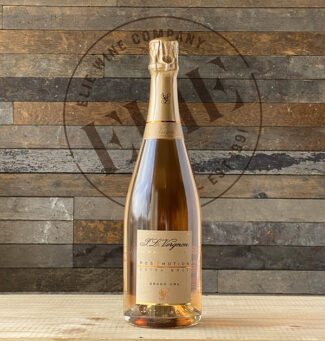 Champagne JL Vergnon ‘Rosémotion’, Grand Cru Extra Brut Rosé ($99)
Champagne JL Vergnon ‘Rosémotion’, Grand Cru Extra Brut Rosé ($99)
Don’t let the cute name fool you; this wine—90% Chardonnay, 10% Pinot Noir, with only 2000 bottles produced—is very serious juice. The Chardonnay is sourced from Mesnil-sur-Oger, Oger et Avize and the Pinot Noir from Grand Cru Mailly; 20% of the Chardonnay is aged for three months in oak, while 80% is aged in stainless steel. The wine then spends three years in the cellar, and is dosed at 3 g/l. It shows notes of currants and pomelos in the bouquet, and on the palate, strawberries, saffron and warm biscuits. (Disgorged June 2019)
Champagne Tarlant
Benoît Tarlant and his sister Mélanie are the real deal: With 12 generations of Champagne growers behind them, the current Tarlant estate consists of 35 acres of vines within 31 lieu-dits—half are Pinot Noir, with Chardonnay and Pinot Meunier splitting the difference along with a handful of Champagne’s ‘forgotten grapes’—Pinot Blanc, Arbane and Petit Meslier. Through hands-on experiment and careful observation, Benoît and Mélanie have singled out 63 parcels that they vinify individually after each harvest, allowing them amazing precision in making blending decisions for base and reserve wines, and especially, for highlighting the expressions of single vineyards.
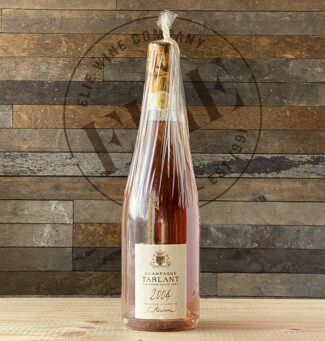 Champagne Tarlant ‘l’Aérienne’, Brut Nature Rosé 2004 ($140)
Champagne Tarlant ‘l’Aérienne’, Brut Nature Rosé 2004 ($140)
50% Chardonnay, 35%, Pinot Noir and 15% Petit Meunier, this bottling comes from four lieu-dits, La Perchape in Œuilly, ‘Four à Chaux, Mont Martin, and Haut du Four à Chaux in Celles-lès-Condé. Each parcel was vinified individually and these four plots were chosen in a blind tasting to be blended and released as a vintage ‘snapshot.’ After aging six months on their lees, the barrels were blended with a small amount of red wine and bottled without dosage on May 4th, 2005. The wine remained sur lattes for 13 years and 9 months before being disgorged on January 31st, 2019. It shows layer upon layer of strawberry pie, brioche and crème brûlée; an excellent balance of fruit and acidity with persistent cream undertones complemented by a driven finish. (Disgorged January 2019)
Champagne Philipponnat
Philipponnat is one of the last remaining Champagne houses run by an original family member, and Charles Philipponnat proudly calls himself ‘a true Champenois, descended from winemakers, cellar masters and growers dating back nearly 600 years.’ For the record, his father René was chef de caves at Moët from 1949 to 1977, responsible for 1961 Dom Pérignon. Since taking over in 1999, Charles has remained hell-bent on returning Philipponnat to its last Golden Age, 1913-1962, when Louis Boland was chef de caves. He has gradually increased the amount of wine aged in neutral wood, and to maximize character, his non-vintage wines age for three years en tirage, while the vintage cuvées spend from five to 10 years on the lees.
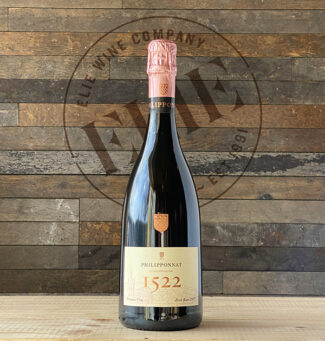 Champagne Philipponnat ‘1522’, Premier Cru Rosé 2007 ($180)
Champagne Philipponnat ‘1522’, Premier Cru Rosé 2007 ($180)
70% Pinot Noir and 30% Chardonnay, with the Pinot Noir coming from the Léon vineyard in Ay and the Chardonnay from Mesnil-sur-Oger. A silky-textured gem loaded with dried herbs, fresh mint, almond butter and smoky black tea as savory notes, and with a dosage of 4.25 g/l, the fruit notes are white peach, apple, grapefruit and lime. (Disgorged June 2016)

Raventós i Blanc
The Raventós family considers itself a winegrowing dynasty, and with considerable justification: 21 generations have lived on their 222-acre estate since 1497, making them among the oldest winegrowing families in the world. Today, biodynamic grower Pepe Raventós farms 44 individual plots, making the most of an ideal microclimate influenced by rivers, lakes, streams and perhaps most notably, the terraces planted on the hill known as the Turó del Serral.
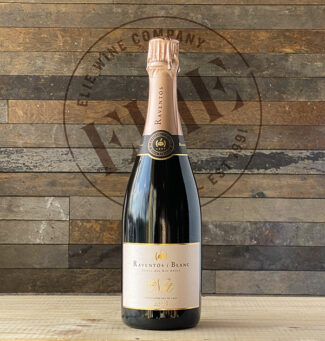 Raventós i Blanc ‘de Nit’ Barcelona Espumoso 2018 Rosé ($27)
Raventós i Blanc ‘de Nit’ Barcelona Espumoso 2018 Rosé ($27)
“Looking for color, I found Monastrell from the western part of the Serral hill, which provides complexity without losing freshness,” says Pepe Raventós, using the Catalan word for Mourvèdre. ‘De Nit’ is Catalan for ‘the night’, and this wonderfully affordably, top-shelf Espumoso rosé also includes judicious amounts of Xarel-lo, Macabeu and Parellada, whose vines were planted between 1969 and 2000. (Disgorged September 2021)
De Nit 2018 en Jeroboam
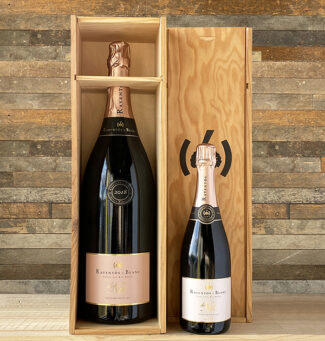 Raventos i Blanc ‘de Nit’ Barcelona Espumoso2018 Rosé ($130)
Raventos i Blanc ‘de Nit’ Barcelona Espumoso2018 Rosé ($130)
What is four times better than three-quarter liter bottle of ‘de Nit’? Three liters of the same. (Disgorged September 2021)
Can Sumoi
At two thousand feet above sea level in the Serra de l’Home range, Can Sumoi is the highest estate in the Penedès and represents a collaboration between two childhood pals, Pepe Raventós and Francesc Escala. The 350-year-old farmhouse that is the focal point of the estate sits above 75 acres planted to Montonega, Xarel-lo and Sumoll vines.
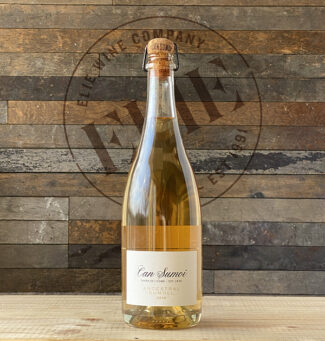 Can Sumoi ‘Ancestral Sumoll’ Rosé Brut Nature 2018 ($28)
Can Sumoi ‘Ancestral Sumoll’ Rosé Brut Nature 2018 ($28)
The name ‘Sumoll’ has roots in the Latin word ‘submolliare’ which means ‘to wither’, perhaps in reference to Sumoll’s use in producing high-end straw wines. Here, this 100% Sumoll occupies the opposite end of the wine spectrum as straw wine; it is a bone-dry, lightly floral sparkler with fresh black fruit aromas accented by saltiness and toasted almond notes. * Don’t expect a Champagne-ferocious fizz; rather than using Méthode Champenoise, ‘Ancestral Sumoll’ is partially fermented in stainless steel vats with fermentation completed inside the bottle, resulting in gentler effervescence. (Disgorged June 2020)
- - -
Posted on 2022.02.06 in France, Champagne
Featured Wines
- Notebook: A’Boudt Town
- Saturday Sips Wines
- Saturday Sips Review Club
- The Champagne Society
- Wine-Aid Packages
Wine Regions
Grape Varieties
Aglianico, Albarino, Albarín Blanco, Albarín Tinto, Albillo, Aleatico, Arbanne, Aubun, Barbarossa, barbera, Beaune, Biancu Gentile, bourboulenc, Cabernet Franc, Cabernet Sauvignon, Caino, Caladoc, Calvi, Carcajolu-Neru, Carignan, Chablis, Chardonnay, Chasselas, Clairette, Corvina, Cot, Counoise, Erbamat, Ferrol, Fiano, Frappato, Friulano, Fromenteau, Fumin, Garnacha, Gewurztraminer, Godello, Graciano, Grenache, Grolleau, Groppello, Juan Garcia, Lambrusco, Loureira, Macabeo, Macabou, Malvasia, Malvasia Nera, Marsanne, Marselan, Marzemino, Melon de Bourgogne, Merlot, Mondeuse, Montanaccia, Montepulciano, Morescola, Morescono, Moscatell, Muscadelle, Muscat, Natural, Nero d'Avola, Parellada, Patrimonio, Petit Meslier, Petit Verdot, Pineau d'Aunis, Pinot Auxerrois, Pinot Blanc, Pinot Gris, Pinot Meunier, Pinot Noir, Poulsard, Prieto Picudo, Rondinella, Rousanne, Roussanne, Sangiovese, Sauvignon Blanc, Savignin, Semillon, Souson, Sparkling, Sumoll, Sylvaner, Syrah, Tannat, Tempranillo, Trebbiano, Trebbiano Valtenesi, Treixadura, Trousseau, Ugni Blanc, vaccarèse, Verdicchio, Vermentino, Viognier, Viura, Xarel-loWines & Events by Date
- April 2024
- March 2024
- February 2024
- January 2024
- December 2023
- November 2023
- October 2023
- September 2023
- August 2023
- July 2023
- June 2023
- May 2023
- April 2023
- March 2023
- February 2023
- January 2023
- December 2022
- November 2022
- October 2022
- September 2022
- August 2022
- July 2022
- June 2022
- May 2022
- April 2022
- March 2022
- February 2022
- January 2022
- December 2021
- November 2021
- October 2021
- September 2021
- August 2021
- July 2021
- June 2021
- May 2021
- April 2021
- March 2021
- February 2021
- January 2021
- December 2020
- November 2020
- October 2020
- September 2020
- August 2020
- July 2020
- June 2020
- May 2020
- April 2020
- March 2020
- February 2020
- January 2020
- December 2019
- November 2019
- October 2019
- September 2019
- August 2019
- July 2019
- June 2019
- May 2019
- April 2019
- March 2019
- February 2019
- January 2019
- December 2018
- November 2018
- October 2018
- September 2018
- August 2018
- July 2018
- June 2018
- May 2018
- April 2018
- March 2018
- February 2018
- January 2018
- December 2017
- November 2017
- October 2017
- September 2017
- August 2017
- July 2017
- June 2017
- May 2017
- April 2017
- March 2017
- February 2017
- January 2017
- December 2016
- November 2016
- October 2016
- September 2016
- August 2016
- July 2016
- June 2016
- May 2016
- April 2016
- March 2016
- February 2016
- January 2016
- December 2015
- November 2015
- October 2015
- September 2015
- August 2015
- July 2015
- June 2015
- May 2015
- April 2015
- March 2015
- February 2015
- January 2015
- December 2014
- November 2014
- October 2014
- September 2014
- August 2014
- July 2014
- June 2014
- April 2014
- March 2014
- February 2014
- January 2014
- December 2013
- November 2013
- October 2013
- September 2013
- August 2013
- July 2013
- June 2013
- May 2013
- April 2013
- March 2013
- February 2013
- January 2013
- December 2012
- November 2012
- October 2012
- February 2004
Search



